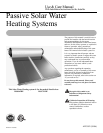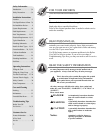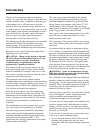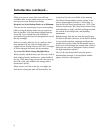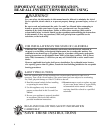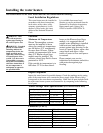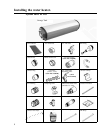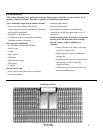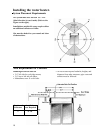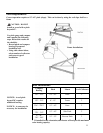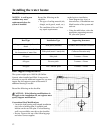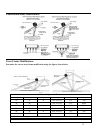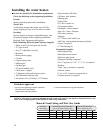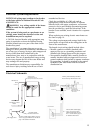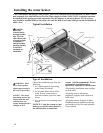
Introduction
Thank you for purchasing a solar water heating
system. It is one of the most effective and trouble-free
systems available today. In addition to reducing your
water-heating bills, it will help preserve precious
natural resources by using free energy from the sun.
As with an electric or gas water heater, your new solar
water heating system operates automatically to ensure
you will always have an ample supply of hot water.
However, there are simple steps you can take to
increase both its efficiency and service life.
This manual provides the manufacturers recommended
procedures for Rheem Thermosiphon solar water-
heating systems. The procedures are essential for
correct installation, troubleshooting and maintenance.
Read each section of this manual thoroughly before
beginning work on the system.
CAUTION: Changes to the design or intended
use of the Rheem Thermosiphon System will void
the manufacturers warranty. Installation,
troubleshooting, and maintenance must be
performed by a qualified technician.
This manual will help you get the most out of your
solar water heating system. Please read it carefully
when the installation is complete, and review it from
time to time to refresh your memory about the service
requirements and safety measures.
The Operation section of the manual contains
important information regarding the system procedures
as well as safety measures pertaining to the system. It
is important that you follow these guidelines to ensure
safe, efficient and trouble-free operation.
While the system requires very little maintenance,
there will be a periodic need for some upkeep. The
Maintenance section outlines those requirements for
service, which you may do yourself, as well as those
procedures best performed by a qualified service
technician.
The Troubleshooting section contains steps you can
take if the system is not performing, as it should.
The solar energy system described by this manual,
when properly installed and maintained, meets the
minimum standards established by the Solar Rating
and Certification Corporation (SRCC). This
certification does not imply endorsement or warranty
of this product by the SRCC.
The solar energy system described by this manual,
when properly installed and maintained, meets the
minimum standards established by the Florida Solar
Energy Center, in accordance with Section 377.705,
Florida Statutes. This certification does not imply
endorsement or warranty of this product by the Florida
Solar Energy Center or the state of Florida.
Your passive solar water heating system is one of the
most efficient yet simple and trouble free water-
heating systems in the world.
The components of the system include a water storage
tank, solar collector panels, and a assortment of pipes
and valves.
In locations which are subject to temperatures below
41°F, a mixture of specially developed Hartgard fluid
and water circulates through the solar collector panels.
This fluid is heated by the sun, then circulated through
the jacket surrounding the water storage tank, heating
the potable (drinking) water inside the storage tank.
The Hartgard fluid is a non-toxic, food-grade liquid,
which provides freeze protection for the closed loop
heat transfer loop. It is colored blue to differentiate the
closed loop fluid from the potable water supply.
WARNING: Under no circumstances can any
fluid other than Hartgard be used, alternate fluids
could be hazardous to your health.
This circulation of the Hartgard fluid is accomplished
naturally, without the need for pumps, sensors or any
moving parts. No moving parts mean fewer potential
problems. These solar water heaters are referred to as
closed loop systems and identified in the model
number by the last two digits.
Your how water is stored in a steel tank lined with two
coats of Primaglaze
®
vitreous enamel (glass) and
thickly insulated to help maintain the water
temperature throughout the day and night.
To ensure your hot water supply is never depleted, the
system is equipped with a backup heater or heating
element. On the few days a year when there may be
insufficient solar energy, you are still assured of all the
hot water you will need.
If your system is your only source of hot water, there
is one way to ensure a constant supply.
a. You can leave the breaker ON all of the time and
the heater will operate only when the water
temperature falls below the thermostat temperature
setpoint
!
!
3



